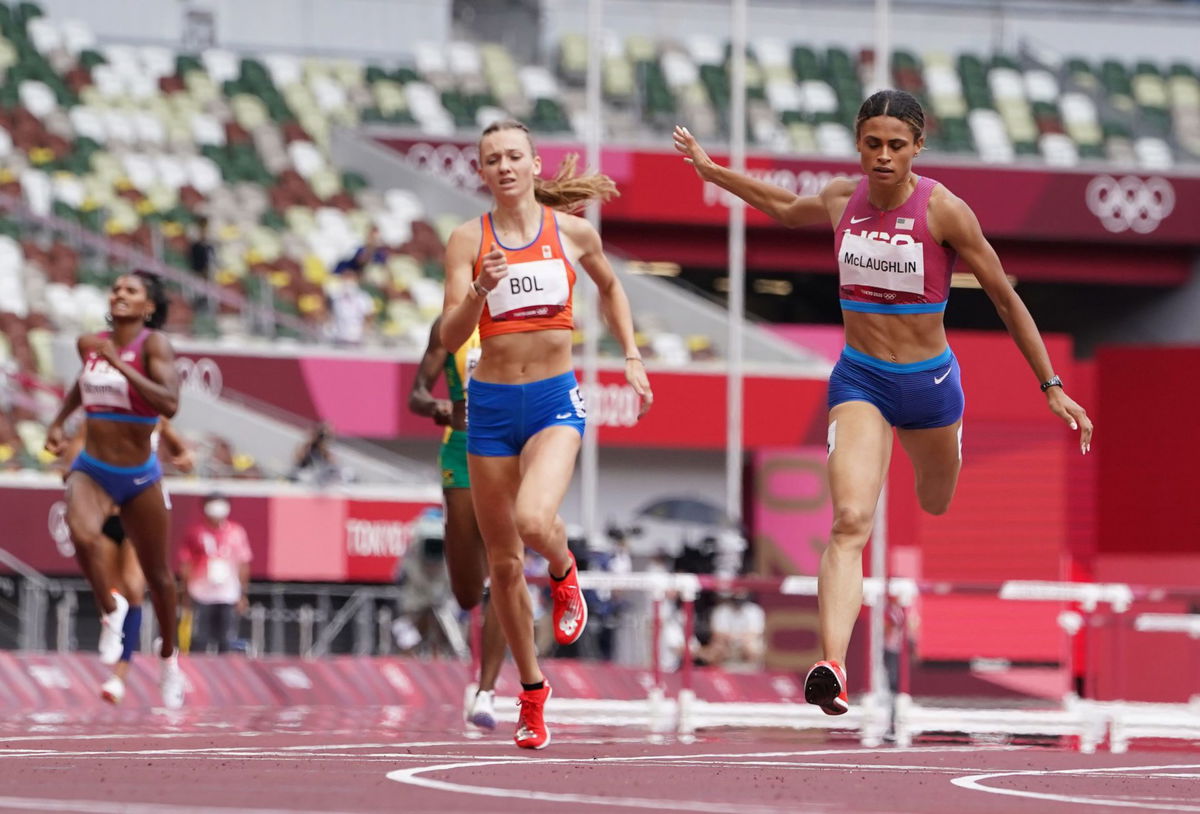
Reuters
Tokyo 2020 Olympics – Athletics – Women’s 400m Hurdles – Final – Olympic Stadium, Tokyo, Japan – August 4, 2021. Gold medallist Sydney McLaughlin of the United States and bronze medallist Femke Bol of the Netherlands in action in the final REUTERS/Lucy Nicholson

Reuters
Tokyo 2020 Olympics – Athletics – Women’s 400m Hurdles – Final – Olympic Stadium, Tokyo, Japan – August 4, 2021. Gold medallist Sydney McLaughlin of the United States and bronze medallist Femke Bol of the Netherlands in action in the final REUTERS/Lucy Nicholson
In the world of women’s track and field, only two athletes have ever broken the elusive 51-second barrier in the 400m hurdles: Sydney McLaughlin-Levrone and Femke Bol. Yet for Sydney, the rivalry doesn’t feel personal. “Obviously, Femke is a wonderful competitor, and there are so many women in our event that are just getting faster and faster,” Sydney clarified. “So you always have to show respect for your opposition because you never know what anyone is going to produce on any given day.” And what about Femke’s view?
Watch What’s Trending Now!
At 25, Femke Bol has always found inspiration in Sydney McLaughlin-Levrone. “I always love to see her [Sydney] race,” Bol shared. “I think it’s so cool to see her also doing the 100m hurdles and the 100m – and she’s killing it when she’s doing this,” said Bol. “It’s amazing to see someone who is so diverse on the track, who’s a great athlete in 400m hurdles but also giving it a shot in 100 hurdles or 100m – and it’s always a joy to watch her race. She’s the best to ever do it.” Their words reflect a deep mutual respect, but admiration aside, the real intrigue lies in how they stack up against each other as athletes.
ADVERTISEMENT
What does the head-to-head record between Femke Bol and Sydney McLaughlin-Levrone reveal?
Femke Bol made a remarkable Olympic debut at Tokyo 2020, seizing the bronze medal with a swift 52.03-second finish, trailing behind Sydney McLaughlin-Levrone. That race became a turning point — a launching pad that ignited her ambition to become one of the sport’s elite. “I have good feelings about the stadium in Tokyo, where I won my Olympic bronze medal,” Bol recalled. “I’m just looking forward to returning to it.” That moment also marked the beginning of a high-profile track rivalry between her and Sydney.
In that very race, McLaughlin-Levrone broke the world record, lowering the mark to 51.46 seconds in a sensational performance. Then came the 2022 World Championships in Eugene, where Sydney took things to another level — demolishing her own record with an astonishing 50.68-second run. It was more than a victory; it was a statement that stunned the world. Bol, ever tenacious, secured silver in 52.27 seconds, confirming that this wasn’t just about times — it was the start of one of track and field’s most compelling rivalries.
Top Stories
Tom Brady Makes Career Announcement for Vegas as Pete Carroll Addresses Losing Raiders Locker Room

Cam Newton Makes NFL Return Conditions Clear to 32 Teams as Panthers Legend Confirms Retirement Stance

Dolphins’ Jordyn Brooks Publicly Calls Out Locker Room Over ‘Poor’ Performance Against Steelers

Caitlin Clark Shows Concerning Signs vs. Kelsey Plum During USA Camp Debut, per National Reporter
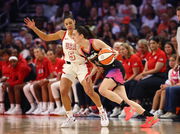
Scottie Scheffler Makes Critical Health Announcement After He Ended PGA Tour Hiatus

Andy Reid Makes Final Decision on Signing New Chiefs QB After Patrick Mahomes’ ACL Injury

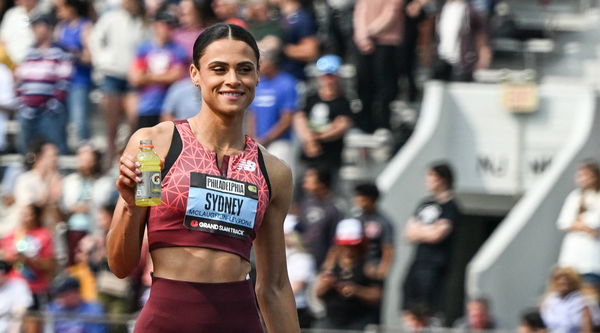
Imago
Grand Slam Track In Philadelphia – Day Two PHILADELPHIA, UNITED STATES JUNE 1: Sydney McLaughlin-Levrone of the United States is seen after finishing the Women s 100 Meters, part of the Women s Short Hurdles group, on Day Two of the Grand Slam Track Series at Franklin Field in Philadelphia, Pennsylvania, United States, on June 1, 2025. Philadelphia United States PUBLICATIONxNOTxINxFRA Copyright: xSTRx originalFilename:str-grandsla250601_np2ly.jpg
Fast forward to 2023, and the narrative took a dramatic twist. Sydney was sidelined due to injury, and for the first time on a global stage, Femke seized her moment. At the World Championships in Budapest, she delivered a powerful, confident run to claim her first major global title. With Sydney absent, it was Femke’s time to shine — and she rose to the occasion. But the queen wasn’t done.
ADVERTISEMENT
At the 2024 Paris Olympics, Sydney returned with a vengeance. With the world watching, she obliterated her own record once again, soaring over the hurdles in an unbelievable 50.37 seconds — a new world record and a second Olympic gold. Femke, ever-consistent and fierce, still managed to reach the podium, taking bronze in 52.15 seconds behind the American phenom.
ADVERTISEMENT
How do Sydney McLaughlin-Levrone and Femke Bol’s 400m hurdles split times compare over each phase?
Every great rivalry in sport is built not just on results, but on contrast—and in the 400m hurdles, the clash between Sydney McLaughlin-Levrone and Femke Bol is as much about style as it is about medals.
From the gun, Sydney is on fire. Her starts are explosive, almost audacious. When she set her Olympic world record, it was her blistering first 200 meters that set the tone — a fearless burst that left her competitors scrambling to keep up. She doesn’t ease into a race; she attacks it from the first stride, carving out a lead before most have found their rhythm.
ADVERTISEMENT
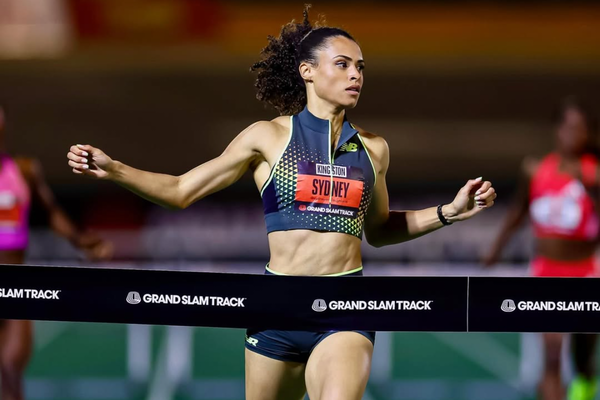
Imago
Credit: Instagram/ Sydney McLaughlin-Levrone
Femke, by contrast, is a master of control. Her strength lies in her mid-race tempo, a rhythm that’s as metronomic as it is relentless. At both Tokyo and Eugene, her lap splits stayed steady in the 52–53 second range. She never panics, never overreaches — just locks into pace, trusting her endurance and precision to carry her through.
But when the final curve fades into the home straight, Sydney changes the game again. Her final 100 meters are a different gear, a display of both raw speed and perfect form. Where others tire, Sydney flies. It’s here — in those closing seconds — that she breaks races wide open, often stretching what began as a narrow lead into a statement win. On the other hand, Femke fights hard in that final stretch, always chasing, always closing — but more often than not, Sydney’s storming finish proves too much.
ADVERTISEMENT
Who has the more efficient hurdling technique and stride pattern?
One of the most fascinating layers in the Sydney McLaughlin-Levrone vs. Femke Bol rivalry lies not just in speed or medals — but in how they run. Their stride patterns and technique are like fingerprints: unique, telling, and game-changing.
For Sydney, it’s all about precision and rhythm. She’s become known for sticking to a consistent 14-stride pattern between hurdles — a rare feat in the grueling 400m hurdles. That unwavering cadence isn’t just about aesthetics; it’s a weapon. It keeps her form smooth, her energy distribution steady, and even when the lactic acid hits in the final stretch, her stride doesn’t falter. It’s this machine-like rhythm that makes her races look effortless, even when they’re historic.
ADVERTISEMENT
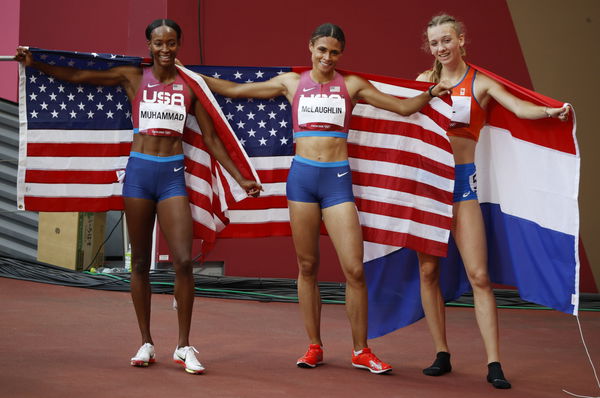
Reuters
Tokyo 2020 Olympics – Athletics – Women’s 400m Hurdles – Final – Olympic Stadium, Tokyo, Japan – August 4, 2021. Dalilah Muhammad of the United States, Sydney McLaughlin of the United States and Femke Bol of the Netherlands pose with flags after competing REUTERS/Phil Noble
Femke, on the other hand, brings her own brand of brilliance. She’s long-limbed and graceful, with a fluid hurdle technique that often makes her look like she’s gliding more than sprinting. Traditionally working with a 15- to 17-stride pattern, her approach was built on range and adaptability. But 2024 saw a turning point — Femke began shortening her stride pattern, adjusting to fewer, more aggressive strides between barriers. The result? Better efficiency, improved power, and a technique that’s more competitive than ever.
While Sydney leans on perfect repetition, Femke thrives on adaptation and finesse. One is a metronome; the other, a jazz soloist finding sharper notes with every race.
ADVERTISEMENT
Who has the better finish speed over the last 100 meters?
If there’s one moment that defines the drama of the 400m hurdles, it’s the final 100 meters — and Sydney McLaughlin-Levrone owns that moment like no one else.
At the Paris 2024 Olympic final, Sydney put on a masterclass in closing speed. Coming off the final bend, the race was still in the balance. Femke Bol was right there, stride for stride, refusing to back down. But then came Sydney’s signature move — a powerful surge, smooth yet devastating, as she shifted gears when others were starting to fade. Hurdle after hurdle, she stretched the gap, turning a tight contest into a statement victory. It was less of a sprint and more of a takeoff — one that left no doubt who owned the finish.
ADVERTISEMENT
Femke, for her part, is no stranger to strong closes. She’s proven it time and again in the relays, even clocking a blistering 49.14 split — a number most open 400m runners would envy. But in the hurdles, it’s a different beast. The fatigue, the timing, the technical toll, and that’s where Sydney pulls away. While Bol stays composed and powerful, her final push doesn’t quite match McLaughlin-Levrone’s explosive last-100 sprint, that combination of raw speed and flawless technique that only a few in history have mastered.
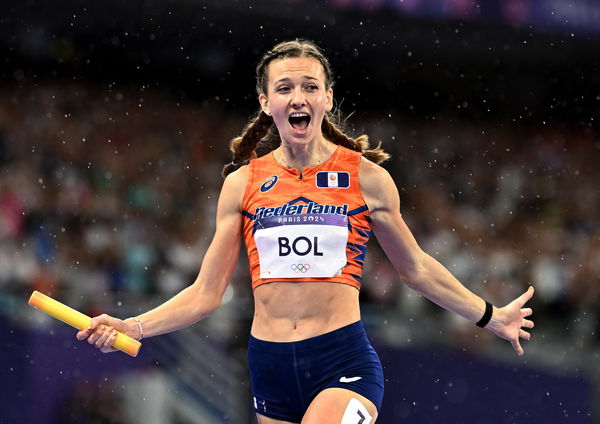
Reuters
Paris 2024 Olympics – Athletics – 4 x 400m Relay Mixed Final – Stade de France, Saint-Denis, France – August 03, 2024. Femke Bol of Netherlands celebrates as she crosses the line to win gold. REUTERS/Dylan Martinez
It’s this final stretch, that last 100 meters of heart, fire, and precision—where Sydney seals her legacy. And though Femke is always in the hunt, always pushing the pace, it’s in those closing moments that Sydney doesn’t just win races — she sets records and records.
ADVERTISEMENT
ADVERTISEMENT
ADVERTISEMENT

